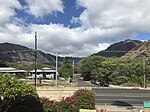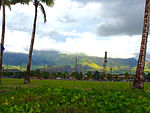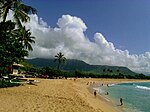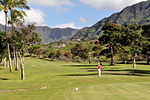USS Scrimmage
1943 shipsAdmirable-class minesweepersMaritime incidents in 1982Ships built in SeattleShips sunk as dive sites ... and 2 more
Shipwrecks of HawaiiWorld War II minesweepers of the United States

USS Scrimmage (AM-297) was an Admirable-class minesweeper built for the United States Navy during World War II. She was built to clear minefields in offshore waters. She served in the Pacific Ocean and, because of her valiant efforts in combat, her crew returned home with six battle stars. Scrimmage was laid down on 22 February 1943 by Winslow Marine Railway and Shipbuilding Company, Seattle, Washington, launched on 16 May 1943; and commissioned on 4 April 1944.
Excerpt from the Wikipedia article USS Scrimmage (License: CC BY-SA 3.0, Authors, Images).USS Scrimmage
Geographical coordinates (GPS) Address Nearby Places Show on map
Geographical coordinates (GPS)
| Latitude | Longitude |
|---|---|
| N 21.438 ° | E -158.206 ° |
Address
Waianae
96792
Hawaii, United States
Open on Google Maps







